Launching Today: AMD's Radeon RX 6900 XT - A Whole Lot of Radeon for $1000
by Ryan Smith on December 8, 2020 9:00 AM EST- Posted in
- GPUs
- AMD
- Radeon
- RX 6000 Series
- RX 6900 XT
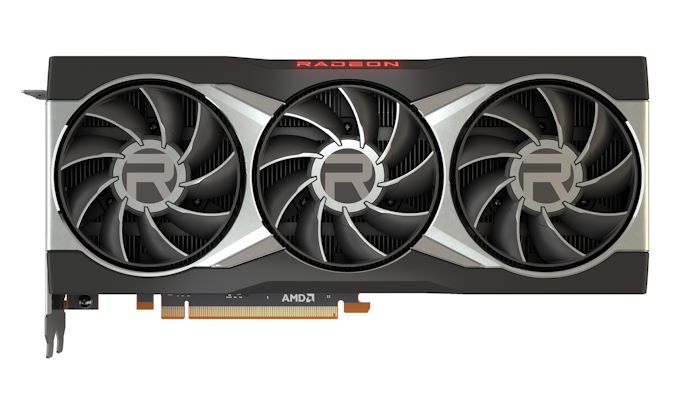
This morning AMD is releasing the final and most elusive member of their initial wave of Radeon RX 6000 series cards: the Radeon RX 6900 XT. The flagship part for AMD’s new RDNA 2 GPU architecture, the 6900 XT is all the Radeon AMD could muster for this generation, and perhaps a bit more. Marking how far AMD has come in a single generation, the RX 6900 XT is their first real shot at the very top of the market in years; and while AMD doesn’t quite reach that goal, they have still succeeded at putting together an interesting and powerful video card for the $1000 market.
Like the Radeon RX 6800 XT and 6800, the 6900 XT was announced back at AMD’s GPU keynote in November, where AMD gave the world the full story, spec. So although the 6800 XT launched first, it would not be the final word from AMD; AMD had one more video card in the pipeline – even more powerful than the 6800 XT – and with it they would be capping off what has been a busy fall season for video cards.
Under the hood, AMD’s new flagship video card is based on the same Navi 21 silicon that has driven all the other RX 6000 series cards to date. Separating the new flagship from its earlier siblings, the new video card uses a fully-enabled version of the Navi 21 chip, allowing AMD’s lead RDNA2 architecture GPU to finally put its best foot forward with regards to performance. This is coupled with some extra binning on AMD’s part means that the 6900 XT not just the fastest Radeon yet, but also that AMD has left no stone unturned in their quest to maximize their performance.
The result is, as alluded to earlier, a bit of a moonshot. AMD gets the advantage of being the second mover – watching NVIDIA and then reacting to them – which has helped AMD to figure out what it can and can’t do. NVIDIA’s GeForce RTX 3090 is incredibly fast, but as the launch of the RTX 3080 and RX 6800 XT have since proven, it’s not entirely out of reach. So AMD has decided to have a go at it – to compete for the flagship spot and the coveted performance crown – by building the best card they could.
The flip side to that, is that it means the 6900 XT will be living up to being the cream of the Radeon crop in more than one way. By requiring a fully-enabled and binned Navi 21 chip, AMD is reaching deep into their yields to assemble their card, and those chips are going to be relatively rare. Not this is a new problem for a GPU manufacturer by any means, but it takes on an additional degree of challenge when those chips are 519mm2 slices of a very valuable 7nm wafer. Ultimately, the $1000 price tag means that this is a video card that many will want and few can afford; but that will still be enough to keep AMD and TSMC busy for months to come.
| AMD Radeon RX Series Specification Comparison | ||||||
| AMD Radeon RX 6900 XT | AMD Radeon RX 6800 XT | AMD Radeon RX 6800 | AMD Radeon RX 5700 XT | |||
| Stream Processors | 5120 (80 CUs) |
4608 (72 CUs) |
3840 (60 CUs) |
2560 (40 CUs) |
||
| ROPs | 128 | 128 | 96 | 64 | ||
| Game Clock | 2015MHz | 2015MHz | 1815MHz | 1755MHz | ||
| Boost Clock | 2250MHz | 2250MHz | 2105MHz | 1905MHz | ||
| Throughput (FP32) | 20.6 TFLOPS | 18.6 TFLOPS | 13.9 TFLOPS | 9.75 TFLOPS | ||
| Memory Clock | 16 Gbps GDDR6 | 16 Gbps GDDR6 | 16 Gbps GDDR6 | 14 Gbps GDDR6 | ||
| Memory Bus Width | 256-bit | 256-bit | 256-bit | 256-bit | ||
| VRAM | 16GB | 16GB | 16GB | 8GB | ||
| Infinity Cache | 128MB | 128MB | 128MB | N/A | ||
| Total Board Power | 300W | 300W | 250W | 225W | ||
| Manufacturing Process | TSMC 7nm | TSMC 7nm | TSMC 7nm | TSMC 7nm | ||
| Transistor Count | 26.8B | 26.8B | 26.8B | 10.3B | ||
| Architecture | RDNA2 | RDNA2 | RDNA2 | RDNA (1) | ||
| GPU | Navi 21 | Navi 21 | Navi 21 | Navi 10 | ||
| Launch Date | 12/08/2020 | 11/18/2020 | 11/18/2020 | 07/07/2019 | ||
| Launch Price | $999 | $649 | $579 | $399 | ||
Diving into the specs, what we’re looking at is a bona fide, genuine, fully-enabled Navi 21 part. All 80 CUs and 128 ROPs are active on this card, allowing Navi 21 to show off just how powerful it really is. AMD is clocking the card the same as the 6800 XT, so that means a peak clockspeed (boost clock) of 2250MHz, while the official game clock rating is 2015MHz. So on paper, the 6900 XT should be 11% faster in texture/compute/RT-bound workloads, while pixel-bound workloads should be relatively unchanged from the 6800 XT. It is admittedly not the largest leap, but it’s enough to justify a separate SKU – and for AMD to make a run at the GeForce RTX 3090.
Speaking of clockspeeds, like the other RX 6000 series cards, the RX 6900 also comes with a couple of other performance presets. The Rage Mode preset allows for peak clockspeeds as high as 2310MHz and a game clock of 2075MHz (~3% higher), while the quiet mode dials this down to a peak of 2185MHz and a rated game clock of 1940MHz respectively.
As for memory, because AMD was already making full use of Navi 21’s 8 memory channels for the 6800 XT, they don’t have the same headroom to tap into here for the 6900 XT. As a result the card ships with the same 16GB of GDDR6 clocked at 16Gbps/pin, giving it a total memory bandwidth of 512GB/sec. This means that the 6900 XT will hit memory bottlenecks in roughly the same place as the 6800 XT does, which can limit some of the card’s real-world performance gains versus what we see on paper. AMD’s 128MB Infinity Cache is still in play here as well, though like the rest of the memory subsystem, it’s not clocked any higher on the 6900 XT than the 6800 XT.
It’s also worth noting that AMD’s Smart Access Memory technology is available for the 6900 XT as well. Using the resizing feature for the PCIe Base Address Register (BAR), AMD is able to squeeze out a bit more performance from their cards by cutting down on some PCIe transfer bottlenecks. Unfortunately SAM support still requires using one of AMD’s latest-generation Ryzen 5000 processors – which like AMD’s video cards, are hard to come by right now – so not everyone will be able to immediately take advantage of it.
Meanwhile, thanks to AMD’s binning, the company has been able to keep the power consumption of the 6900 XT at the same 300 Watts TBP (Total Board Power) as the 6800 XT. This means that the additional performance unlocked by the 6900 XT largely comes “for free”, as AMD’s use of higher-grade chips offsets what would normally be a power penalty from lighting up Navi 21’s last 8 CUs. And though not apples-to-apples, it gives AMD an advantage over NVIDIA, whose RTX 3080 and RTX 3090 cards are rated for 320W and 350W respectively.
AMD Radeon RX 6900 XT (Reference Card)
Given their identical TDPs and GPUs, it’s no surprise that AMD is largely reusing the board and cooler design from the 6800 XT. AMD’s latest generation design handled 300 Watts pretty well, so there’s little that needs to be changed for the 6900 XT.
For the 6900 XT launch, AMD sent over a proper picture of the PCB, confirming that this is the same board design (if not identical PCB) as to what’s used for the 6800 XT. The one difference at the surface is that AMD has populated the final VRM phase, which went unused on the 6800 XT. As a result the 6900 XT offers 16 VRM phases, 3 of which go to the VRAM while the other 13 feed the GPU. One more VRM phase shouldn’t make any radical differences, but it’s one more thing AMD has done to squeeze out a bit more efficiency from the card and allow them to hold the line on TDP at 300 Watts.
As for AMD’s cooler, this is the same cooler that’s used in the 6800 XT. Which is to say a sizable 2.5-slot, triple fan open air-style cooler. With a vapor chamber within to help draw heat into the fins, it’s a tried and true design, and certainly AMD’s best tri-fan cooler to date. Coupled with the above-average height of the card (120mm), the 6900 XT ends up being a thick card, though not unusually so from other 300W+ card designs. Accordingly, you’ll want to give the cooler a wide berth for air intake. Otherwise the 10.5-inch (267mm) length means that it should fit into most cases without running into the front of the case.
And since this is based on the 6800 XT, the power and port specifications are also the same. Feeding the beast are a pair of PCIe 8-pin power sockets at the top-rear of the card. Meanwhile the card offers a total of 4 display outputs: 1 HDMI 2.1 port, 2 DisplayPort 1.4 outputs, and a USB-C port that offers DisplayPort 1.4 alt mode functionality.
Product Positioning & The Competition
As AMD’s flagship video card, the 6900 XT is primarily aimed at 4K gaming with no compromises – or at least as few as are required today. The 6800 XT already did fairly well here, so the 6900 XT does even better; there are few games it can’t average 60fps or better at, even in 4K. So while AMD pitches their entire RX 6800/6900 product stack as being for 4K gaming, the RX 6900 XT is certainly the most capable for the task.
For today’s launch, the initial wave of cards will all be AMD’s reference design. However AMD’s board partners are designing their own custom cards as well, and according to AMD these will be available “shortly” after today’s launch. The AIB partners are certainly jumping at the chance to offer such a high-end video card, and at least one press release has already gone out even before AMD’s embargo. On the whole, expect most builders to reuse their triple-fan designs from their custom 6800 XTs.
Sizing up AMD’s product stack, on the one hand, the good thing about launching your top card last is that it isn’t going to cannibalize your other card sales. On the other hand, it makes for a noticeably expensive part; the RX 6900 XT is a flagship card, and it is priced accordingly. The $1000 MSRP is over 50% higher than the RX 6800 XT, and the performance gains are nowhere near that high. Put another way, the 6900 XT requires the very best in Navi 21 silicon, and AMD is charging prices to match. It’s not a video card for bargain hunters or gamers looking to be economical; the 6900 XT is for the few gamers who can drop a kilobuck on getting the very best video card that AMD can make.
As for AMD’s competitive positioning with the card, the 6900 XT finds itself in an interesting yet odd spot. The 6900 XT doesn’t really have a peer among NVIDIA’s cards; it outclasses the RTX 3080, but it can’t keep up with the RTX 3090. It’s somewhere in the middle, and unsurprisingly the pricing reflects this.
So if you look at the 6900 XT from a top-down perspective, then what you have is a card that’s almost as good as the RTX 3090 for $500 less. AMD can’t take the crown, but they can sure spoil NVIDIA’s own flagship card. On the flip side, looking at things from a bottom-up perspective, and much the same can be said about the RTX 3080: the RX 6900 XT is better, but it isn’t $300 better. Workstation users may beg to differ on the last point thanks to the card’s 16GB of VRAM, but for gaming it’s a bit more clear-cut. And of course, none of this touches the usual intangible features for both sides, such as Radeon Anti-Lag and DLSS.
But, of course, this assumes that any of the latest-generation video cards are readily available from retailers, which continues to not be the case. AMD and NVIDIA alike are facing more demand than they can supply, and even at $1000 the 6900 XT is in the same boat. So I’m expecting to see it sell out quickly this morning, after which it’ll be subject to the same spotty availability as other high-end video cards. Which just goes to show how much things have improved for AMD with this generation – they’re able to make a $1000 video card that’s guaranteed to sell out – albeit also a reminder that the current times are far from normal.
| Q4 2020 GPU Pricing Comparison | |||||
| AMD | Price | NVIDIA | |||
| $1499 | GeForce RTX 3090 | ||||
| Radeon RX 6900 XT | $999 | ||||
| Radeon RX 6800 XT | $649/$699 | GeForce RTX 3080 | |||
| Radeon RX 6800 | $579 | ||||
| $499 | GeForce RTX 3070 | ||||
| Radeon RX 5700 XT | $399 | GeForce RTX 3060 Ti | |||


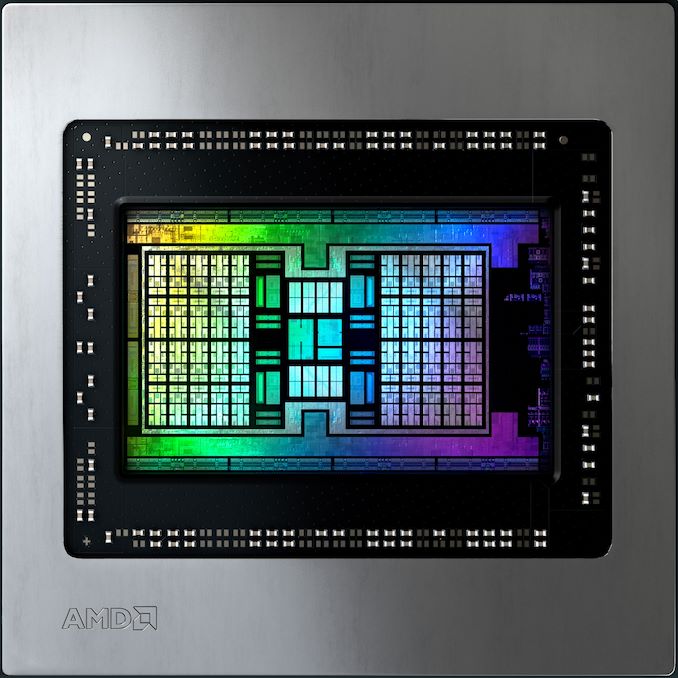
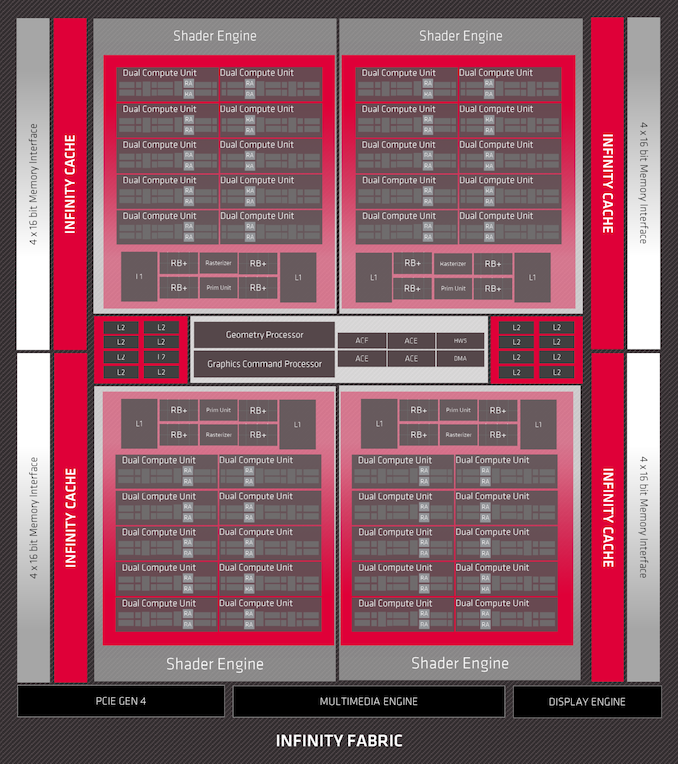
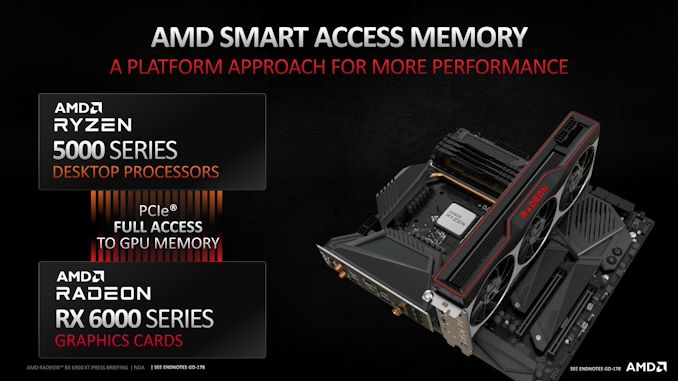
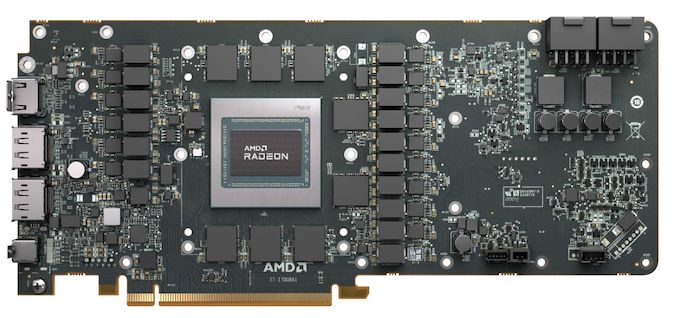
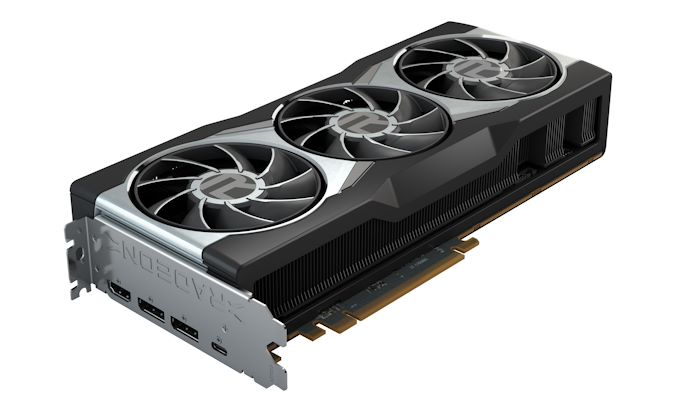





















54 Comments
View All Comments
shabby - Tuesday, December 8, 2020 - link
"they’re able to make a $1000 video card that’s guaranteed to sell out"If there's only 5 available then sure, anything will sell out.
Smell This - Tuesday, December 8, 2020 - link
In case you have missed it, AMD has launched the CDNA 1.0 architecture.
I suspect the CDNA "Navi 21-equivalent" with 5120 shaders/80 CUs is waiting for 32 GB of HBM2 as a CDNA 'Arcturus-Lite' workstation GPU. Dr Su likes the pro end of things, and gets to dink nVidia with the 6900XT 'Gamer' and its $500 discount. HA!
There are also bunches of "Navi 2X-equivalents" waiting in the wings, too - including what looks to be the new Radeon 6700XT with "Infinity Cache." Gotta think that will split the GeForce RTX 3070 into "no man's land" put price-pressure on the new GeForce RTX 3060 Ti
whatthe123 - Tuesday, December 8, 2020 - link
Considering RDNA has been complete crap for compute compared to its raster performance improvements, I'm going to hope they release some "consumer grade" CDNA pricing. Otherwise the price premium on RDNA makes no sense when it does nothing particularly well except raster graphics.Samus - Tuesday, December 8, 2020 - link
Compute performance isn't their priority. They have the most powerful x86 CPU's in the industry that are almost entirely underutilized by game developers. Have them offload resources to those cores instead of having the GPU handle computational functions.whatthe123 - Tuesday, December 8, 2020 - link
CPUs are nowhere near as fast nor efficient as GPUs in certain compute tasks, which is the whole reason CDNA is being produced for their exascale supercomputer projects.Flunk - Monday, December 14, 2020 - link
This is intentional, the average buyer for these cards doesn't really use compute. They want those buyers to buy the higher-end compute-focused cards.Smell This - Wednesday, December 9, 2020 - link
The structure/shaders of GCN are retained between AMD CDNA and AMD RDNA. The "compute arrays" (CUs) are retained, and managed by (I think) four "Asynchronous Compute Engines" (ACE). If I recall correctly the 'original GCN' only had 2 ACEs. AMD is always tweaking the numbers of ACEsCDNA removes all of the fixed-function graphics hardware of RDNA but keeps the 'old' video encode/decode **Avivo-UVD-VCN** logic.
GCN was a GPGPU compute monster before it was neutered in Polaris (?)
Smell This - Wednesday, December 9, 2020 - link
CDNA "consumer grade" pricing: **$6,400 a pop in single unit quantities**
https://www.nextplatform.com/2020/11/16/amd-at-a-t...
A 'cluster' --- maybe $25k with discount
LOL
Kurosaki - Friday, December 11, 2020 - link
@AT: REMEMBER MEEEEEAnd to answer your question WAT
mdriftmeyer - Tuesday, December 8, 2020 - link
It's already been discussed on Twitter that of the 150k wafer quarter allocation of 300mm 7nm wafers with TSMC 80% of them immediately went to PS5/X Box X and the remaining priorities are OEMs like HP Enterprises, etc., for EPYC CPU orders, Cloud Service Provides ala Microsoft/AWS/Google and more then custom ASIC designs for the likes of Apple in GPUs, etc., with the general DIY people last.Why? Money talks, BS walks.